Overview:
We live in uncertain times. With big data and a boom in our ability to transmit ideas comes a seemingly greater amount of erroneous information, and therefore the need for everyone to be able to properly identify, discredit, and prevent the spread of falsehoods. What follows is a tour of how much the misrepresentation of reality pervades our world (from whimsical pranks and well-intentioned hoaxes to full-blown propaganda intended to defraud and manipulate), concluding with a discussion of tactics for taking a rational and scientific view so that we may both decrease our susceptibility and improve our ability to detect misinformation.
“Oceania had always been at war with Eastasia.”
— George Orwell, 1984
“We had no domestic attacks under Bush.”
— Rudolph Giuliani, 2010
In 1985, Sports Illustrated ran a story about Sidd Finch, a Mets prospect who had a 168 mile-per-hour fastball. The article spanned nineteen pages and featured interviews with the pitcher’s friends and family. One of the photographs showed the team’s reserve catcher nursing a sore hand after participating in batting practice with the new player. The subheadline to the piece read, “He’s a pitcher, part yogi and part recluse. Impressively liberated from our opulent life-style, Sidd’s deciding about yoga — and his future in baseball.” If you take the first letter of each of these words, you end up with, “Happy April Fools Day — ah fib.”
The thing about April Fools jokes, like any other pranks, is that they’re only funny if you figure out they’re not true. According to one evolutionary theory of humor, the joy of amusement is from your brain rewarding itself for detecting a bad pun, deciphering a double entendre, or recognizing a non sequitur. The frustration with being duped, or not in on the joke, in this case, is understandable. Now I don’t feel too bad for the Mets fans who were given false optimism from falling for the hoax, considering that the team won the World Series the following year. But what about the television network reporters who flew down to the team’s spring training camp in Florida for a press conference with this fictional athlete?
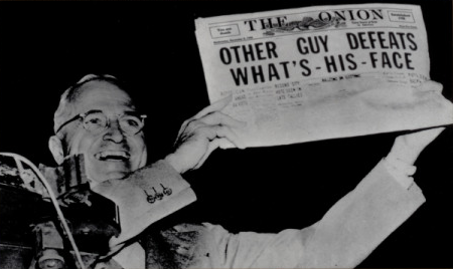
There are numerous examples of satirical news pieces being mistaken for actual reporting. The Onion alone is responsible for dozens of cases. The Beijing Evening News once picked up a pretend story about members of congress insisting that a retractable dome be added to the capitol building, and ran it as fact. Although the paper later printed a correction, even amongst those that read it, the impression left by the original article, as evidence confirming how dysfunctional democracy is in the United States, was effectively a case of anti-American propaganda in action.
The Onion has also elicited misguided outrage from critics of Harry Potter, Planned Parenthood, and homosexual lifestyles. Sense a pattern here? Of course liberals can fall for fictitious stories too, as the Gorilla Channel joke demonstrated, but it may also be that more paranoid people have an increased likelihood to believe fake stories in general. Being conspiracy-minded has its drawbacks, to say nothing of the effects of regularly consuming misinformation.
Furthermore, using humor as a veil for genuine insults and bigotry just isn’t the best practice. Tiger Woods, for example, has been the target of several racist comments. At some point, hiding behind the “but it’s only a joke!” claim isn’t excusable. That’s why making bomb threats in the TSA line always has to be treated seriously. Driven by the desire for monetized views, YouTube videos, such as the fake acid attacks and child abuse pranks, are becoming an increasingly alarming demonstration of how denigrating and harassing speech or actions are never truly harmless.
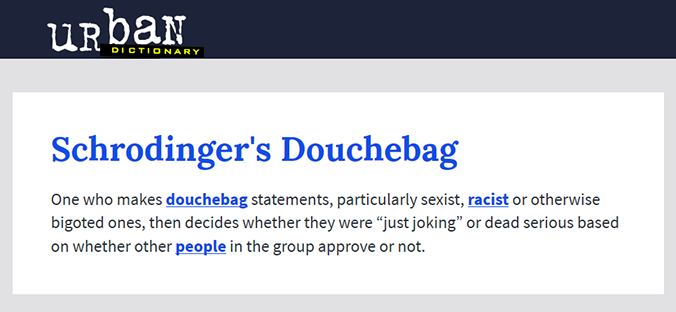
For someone who supposedly gained acclaim and adherents for being a straight shooter by speaking his mind, our president has a habit of making statements about Barak Obama being the literal founder of ISIS, inciting the violence at his rallies, suggesting that “Second Amendment people” could stop a President Hillary Clinton, encouraging police brutality, asking Russia to hack the DNC, and accusing people who didn’t applaud him of therefore being un-American and treasonous, all with deadpan delivery, only to later walk them all back and reveal that he was clearly joking when pressed to explain such bizarre claims. Even if we were to accept these explanations, it certainly makes you wonder what else he could be kidding about.
Donald Trump isn’t the first politician to realize that if you repeat a lie often enough, whether it be about crowd size or voting fraud or paid protesters or golf scores, it doesn’t really matter if it’s not true at all. There’s something to the saying about how a lie can travel around the globe while the truth is still putting on its shoes. When an unlicensed plumber who made $40,000 a year challenged President Obama with the question, “I’m getting ready to buy a company that makes 250 to 280 thousand dollars a year. Your new tax plan is going to tax me more, isn’t it?” he shaped the narrative, regardless of how unsubstantiated the basis for his statement was.
Using weasel words masked as idle speculation can sow the seeds of ignorance. Is the Obamas bumping fists a secret “terrorist fist jab”? Hey, I’m just asking. Michele Bachmann once said, “I find it interesting that it was back in the 1970s that the swine flu broke out then under another Democrat president, Jimmy Carter. And I’m not blaming this on President Obama, I just think it’s an interesting coincidence.” The 1970s epidemic was during Gerald Ford’s presidency, by the way.

In 2000, voters in the South Carolina presidential primary were asked the hypothetical question, “Would you be more likely or less likely to vote for John McCain for president if you knew he had fathered an illegitimate black child?” John McCain does have an adopted daughter from Bangladesh. The false pretense, innuendo, and implication by that push poll could have had a real effect on the election outcome.
Public figures are also not beyond the practice of astroturfing to build manufactured support for their causes. Richard Nixon’s Committee to Re-Elect the President ran supportive advertisements supposedly sponsored by “concerned citizens.” Vladimir Putin has won elections with over 99% of the vote, amid apparent voter turnouts greater than 100%. Gerrymandering is routinely used to unfairly tilt the balance of power. Textual analysis shows that over a million anti-net neutrality comments sent to the FCC last year were probably bogus. Celebrities have also been found to have fake Twitter followers.
Shady business practices can be found in almost any industry. In 2014, “Uber employees have ordered and canceled more than 5,000 rides from rival Lyft.” A Heineken distributor is credited with starting the rumor that Corona beer contained urine. Amazon, like many other sites with user feedback, is rife with sockpuppets, shills, and fake reviews, both positive and negative. Jim McCormick sold phony bomb detectors to governments, and Volkswagen made false claims about their emissions standards. Then there’s the more blatant cases of corporate fraud, as evidenced by the practices of Kenneth Lay.

The line between clever marketing and false advertising is quite thin. The depiction of fast food in commercials is a notable case of how labels such as “serving suggestion” and “enlarged to show detail” can help distort reality when it comes to the actual item being sold. Companies which have received penalties for overstating product claims include Airborne, Activia, Classmates.com, Vitaminwater, Vibram shoes, and Western Digital. Meanwhile, homeopathic medicine gets a pass by adding the small disclaimer of, “Not intended to diagnose, treat, cure or prevent any disease,” whose authenticity ranks right up there along with “these changes will allow us to serve you better” and “we’re experiencing higher than normal call volume.”
It’s one thing to frame merchandise in such a way that the message, however misleading, being conveyed is, “buy it and you’ll be as good looking and happy as this person,” yet other cases of advertising are not only deceptive but also based on fakery. Look no further than how the ridiculously airbrushed models in the fashion industry have perpetuated the ideal of an unrealistic body image. Ads for televisions and other electronic devices use simulated screen images. Video game promotions often pass off rendered graphics as genuine gameplay, among other things. For example, people who purchased No Man’s Sky sought refunds due to the lack of its promised but oversold features.

The technology used to deceive people can only improve over the years. Joseph Stalin removing executed colleagues from printed photographs has given way to more seamless practices, such as earlier this year, when a beleaguered James Franco was photoshopped off a Vanity Fair cover. Software can now even generate fake audio and video of people. As always, the pornography industry is leading the way with these advances. In years to come, who knows what long-dead celebrities may appear in? George Lucas, of all people, testified against this sort of practice, within the context of colorizing black and white films, in 1988.
Artists may employ deception to draw attention to their work. The War of the Worlds radio drama, despite being broadcast with several disclaimers, caused a minor panic, making Orson Welles famous in the process. The Blair Witch Project, crop circles, lonelygirl15, and professional wrestling all owe part of their success from pretending to be real. Grammy winners Milli Vanilli, arguably, went a bit too far by lip-synching to other people’s voices. Other noted fraudsters include James Frey, who embellished his autobiography A Million Little Pieces; Carlos Castaneda, who fabricated tales about interacting with a shaman named Don Juan; and Jayson Blair, who made up interviews while reporting for The New York Times.
The desire for attention has also led people to pass off others’ work as their own. Plagiarism has been committed by academics, novelists, speechwriters, and yes, crossword puzzle editors. People have boasted about their fictitious credentials and accomplishments, especially with experiences involving military service. Wes Cooley pleaded guilty to the felony of lying on his election ballot guide about participating in the Korean War. Navy SEAL Chris Kyle falsely claimed to have shot looters after Hurricane Katrina. Brian Williams “made the mistake” of claiming his helicopter took fire in Iraq, whereas Hillary Clinton “misspoke” about landing under sniper fire in Bosnia.

Just as a mere accusation of a crime does not constitute conclusive proof of guilt, simply denying culpability shouldn’t carry much weight either — despite what Donald Trump has indicated about the likes of Vladimir Putin, Roy Moore, and Rob Porter. Lance Armstrong, when pressed about his rumored and later admitted doping abuses, was initially indignant at the accusations, stating, “If you consider my situation: a guy who comes back from arguably, you know, a death sentence, why would I then enter into a sport and dope myself up and risk my life again? That’s crazy. I would never do that. No. No way.”
Other cyclists have been caught using hidden motors to propel their bikes. In running, there exists the unfair practice of hiring “bib mules” to complete a race in your stead so that you can obtain a qualifying time, as well as blatant course cutting. Rosie Ruiz took the subway for part of her New York City marathon path, while triathlete Julie Miller’s bicycle number and timing chips have repeatedly disappeared as she completed undocumented laps to win races. Other famous cases of unsportsmanlike conduct include the thrown 1919 World Series, the 2002 Olympic figure skating judging scandal, and rigged game shows from Twenty One to Who Wants to be a Millionaire.
Due to a flawed method for picking seeds in tournaments, soccer and badminton matches have been played by athletes trying to lose on purpose. NBA teams have been accused of tanking games to secure better draft picks. Thrown matches may also occur in sumo wrestling. The Mechanical Turk was presented as an automaton capable of playing chess, when it was really a human in disguise. Now that computers far outrank even the best grand masters, the chess cheat today is instead to rely upon them in competition. See also, “The Fake Strongmen of Instagram.”

Are humans hard-wired for practicing deception? After all, camouflage and mimicry are rampant in nature. In 1985, Laura Salant took the bar exam while disguised as her husband. Gamer Angel Hamilton pretended he was bound to a wheelchair. People have faked births for extra tax credits, faked marriages for immigration purposes, and faked deaths for insurance money. Ward Churchill, a professor fired for academic misconduct, also made a dubious claim about having Native American ancestry. DNA comparisons revealed that Anna “Anastasia” Anderson was not a member of the Romanov family.
Due to laws against fully punishing criminals with mental disabilities, the temporary insanity defense may be prone to abuse. During the 2011 protests in Wisconsin over collective bargaining rights, when asked if he could have strikebreakers pose as marchers provoking mayhem, Governor Scott Walker stated, “we thought about that.” In 2014, Republicans created decoy websites posing as Democrats to solicit donations. Other notable imposters include con artist Frank Abagnale, jazz singer Billy Tipton, sign language interpreter Thamsanqa Jantjie, and mafia infiltrator Joe Pistone.
In certain societies, it may be considered perfectly acceptable to choose dishonesty over being impolite. Saving face and variations of the perfunctory, “I’m fine, thank you,” vary from culture to culture. I wouldn’t argue that it’s imperative to answer the question “are you hiding Jews in your basement?” correctly, but there is usually a price to be paid for not telling the truth, and problems with not clearly meaning what you say and saying what you mean. As shown with the murder of Thomas Becket, it gives others license to excuse any behavior as a misinterpretation of overly vague statements.
If we didn’t have to read between the lines as much, less misunderstandings would occur. Anyone who’s learned first hand what “needs a little work” signifies in real estate listings can attest to this. In the delicate language of diplomacy, unfortunately, not telling the truth is a common convention. Days after Donald Trump spoke with Taiwan’s president over the phone, China captured an underwater drone owned by the United States. The stated reason? It was a “hazard to navigation.” If you believe that rhetoric, I have a bridge to sell you.
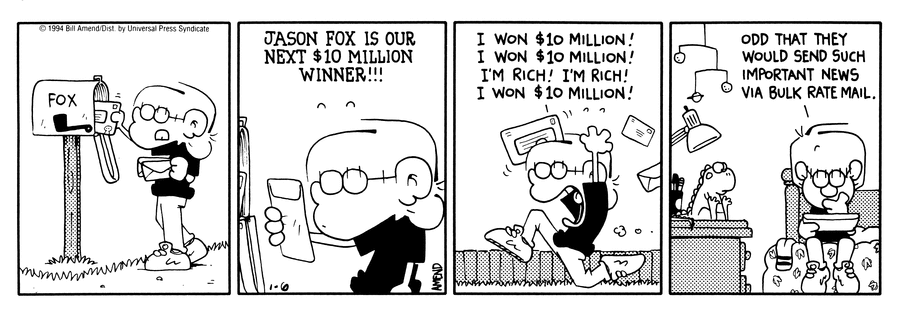
Relying on imprecise or esoteric language can misinform and mislead others. P.T. Barnum famously used banners stating, “This way to the Egress” to keep exhibit crowds moving. Petitions have been signed against the purportedly dangerous compound called dihydrogen monoxide. Contestant winners promised a new Toyota have been instead given a “toy Yoda.” And a classic eBay scam involves selling photographs instead of the physical items they depict.
Money can be the primary motivating factor in conveying misinformation. Millionaire Pastor Benny Hinn professes to heal others with his faith. The costs to achieve promotions in rank within the Church of Scientology run in the hundreds of thousands of dollars. Hustlers have defrauded others by claiming to be able to double your money with magic (or hacking). Bogus charities have raked in riches too, as did swindler Bernie Madoff. The forged Hitler Diaries were sold for millions. Advance fee scams are rampant online, and so are companies selling counterfeit products. Real world examples include the classic knockoff Rolex, faux Fabergé eggs, and mislabeled fish.
These schemes prey on those who can be fooled, or at least forget that if something appears too good to be true, it probably is. There’s no telling what we may try to get ahead. Investigations have shown a widespread pattern of people feigning injuries for workers compensation. Firefighter Albert Arroyo, for example, competed in a bodybuilding competition while collecting pension payments for being certified by his doctor as “totally and permanently” disabled. Many other cases of social services fraud are well documented.
Malicious pranks can cause problems for unsuspecting people. iPhones might have been destroyed by individuals believing tall tales about software updates which made the devices waterproof and able to be charged in the microwave. Then there’s the #baldforbeiber campaign, which netted an unknown number of victims. Last December, the target of a swatting prank was killed by police.

The goals of people spreading misinformation are sometimes more clearly defined. Those who fabricated The Protocols of the Elders of Zion, that doctored photograph of George Bush holding a book upside down, and the Killian documents each had clear political positions they were trying to spread. I’d bet the fake images of Barak Obama and George Bush using phones the wrong way were made by people with identifiable political views. The same goes with the trolls who claimed to be victims of assault at the Black Panther premiere and the Israeli citizen who called in bomb threats to Jewish centers.
A more sophisticated misinformation campaign is being conducted by the Russian government. The scale of “information warfare” waged by the likes of the Internet Research Agency, as detailed in the recent indictments from the DOJ, is staggering. The operation expended millions of dollars and used hundreds of employees with the goal of disrupting the democratic process and promoting divisive issues in the United States. On May 21, 2016 in Houston, twin protests, one to “Stop the Islamization of Texas” and another titled “Save Islamic Knowledge,” took place at the same location. Both events were organized by bogus social media accounts and advertisements from Russia.
A search for abortion providers in Google turns up pro-life “crisis pregnancy centers.” These liars may be acting with benevolent intentions, yet untruths often have unintended consequences. The persistent myth of fan death may have been perpetuated by the Korean government to curtail electricity consumption. Children instructed to behave because Santa is always watching them, or not to swallow gum because it takes seven years to digest, however, will only have their trust in their parents eroded when they find out the truth. How about telling a patient, “these drugs will ease your pain” when they’re being given no real medicine at all? This situation was portrayed in the M*A*S*H episode “Major Topper.”
Medical trials including a control group given placebos, as well as psychology experiments employing deception to mask what the study is truly measuring, must rely upon misinformation to work. Slanted studies have also been produced with the help of the sugar, cigarette, opioid, and cola industries. In scientific research nowadays, finding the truth occasionally and sadly takes a back seat to publishing significant results in a prestigious journal. This has led to authors employing p-hacking and other shenanigans to concoct tainted findings.
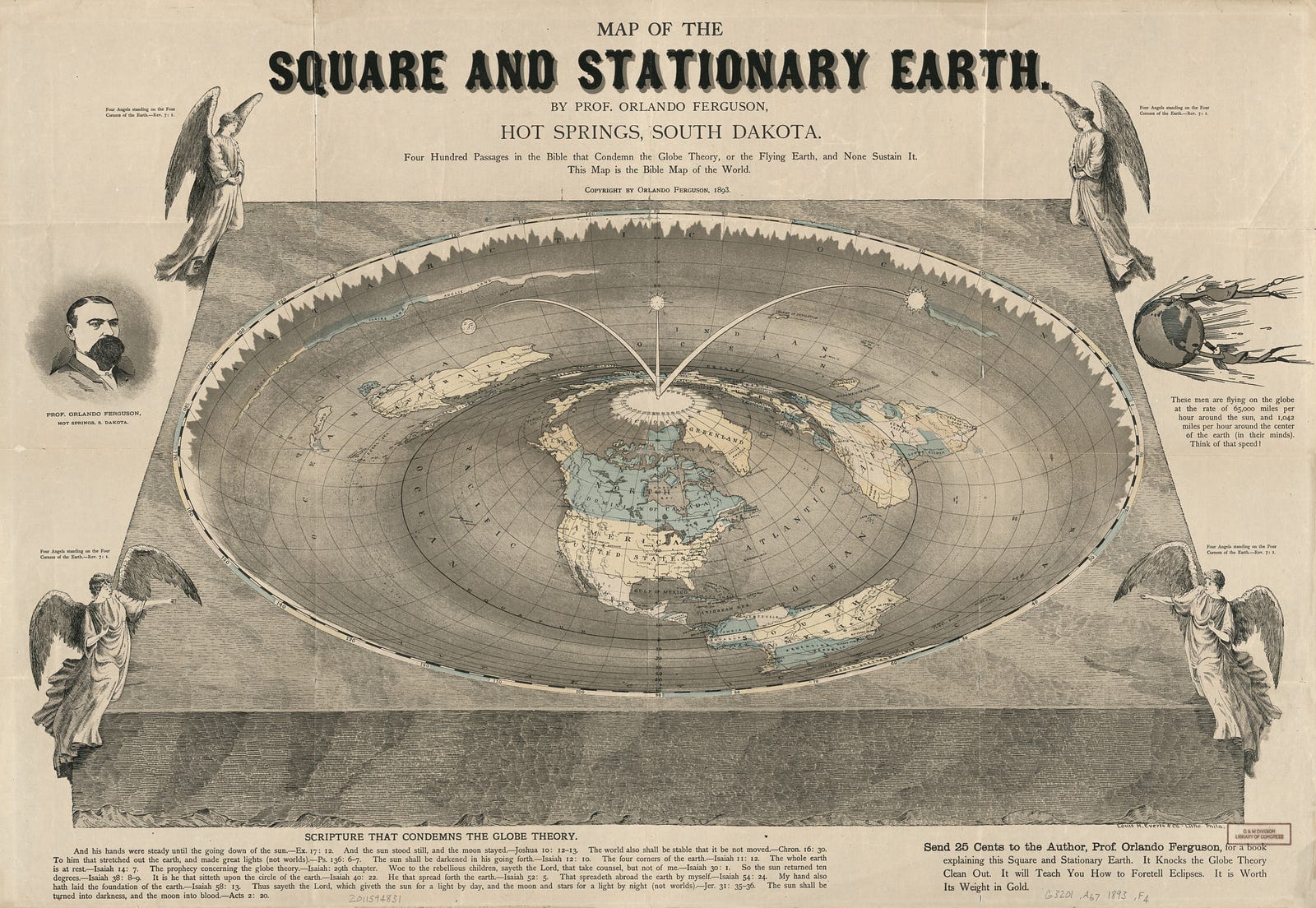
The way that data is visualized can create misleading images. The Mercator projection famously depicts Africa as about the same size as Greenland, when it is actually almost fourteen times larger. The Gall-Peters projection solves this problem by showing their relative areas properly, but at the expense of distorting their shapes.
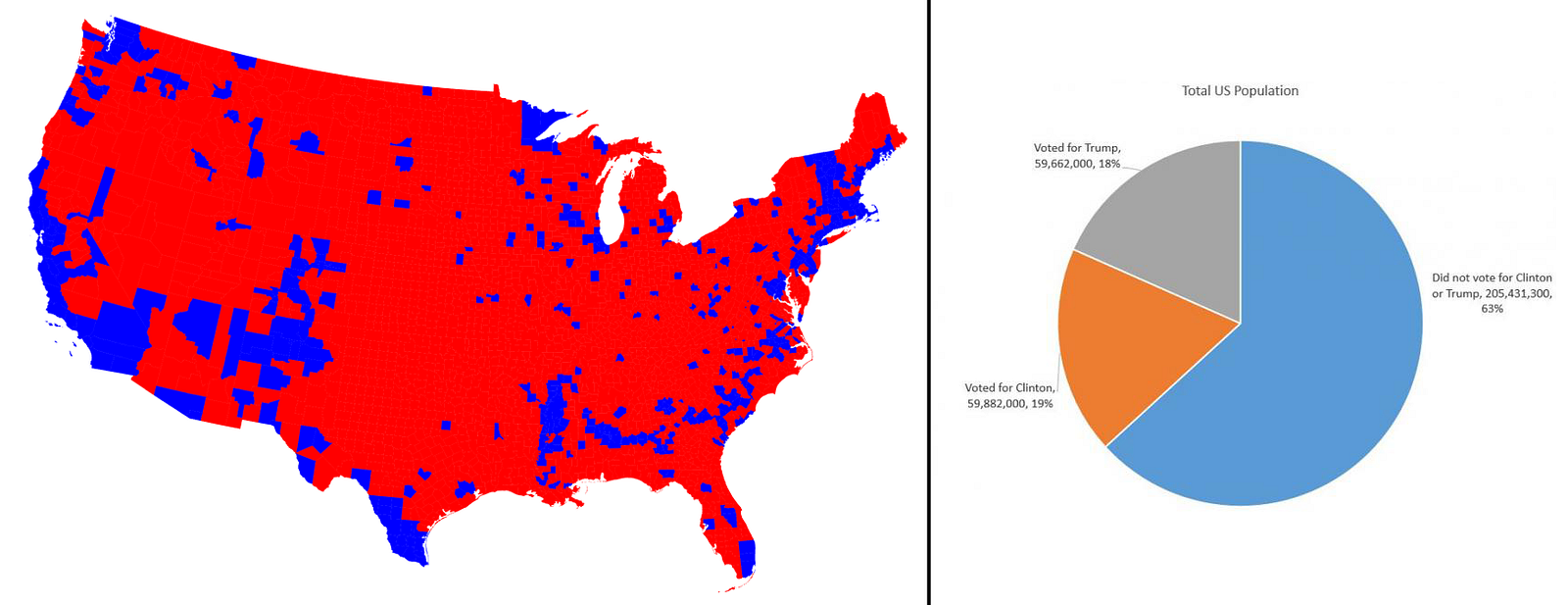
The 2016 presidential election winner by county map paints an overwhelmingly red picture, in comparison to a graph showing how 19% of the country’s population voted for Trump.

A county map shaded by total residents presents a skewed picture of some true populations, given the size differential of the counties. Can you tell that Georgia is more populated than Arizona?

Marketers also know how to lie with statistics. Look at this Chevrolet advertisement from the back cover of Time (October 12, 1992). Are Chevy trucks twice as reliable as Toyotas, or only better by two percent?
Lies can be told by simply omitting facts. Bill Clinton stating, “There is not a sexual relationship” to cover up the fact that there was a previous sexual relationship is a famous example. In a variation of the adage that history is revised by the victors, a Google search for “Tiananmen Square” from a Chinese Internet connection will exclude results describing the massacre of pro-Democracy protesters by the government in 1989. A similar situation exists with Chinese nationalism in cinema. Other propaganda films include the Nazi party’s Triumph of Will and the anti-marijuana movie Reefer Madness.
The use of misinformation in wartime, against both the enemy and one’s own citizens, has a long and glorious tradition. The bluff known as the “empty fort strategy” and other ruses, such as wearing the enemy’s uniforms, date back to antiquity. Contemporary examples include the Gulf of Tonkin non-incident and the false statements used to influence public opinion about the Gulf War. Who can forget the claims about WMDs and “significant quantities of uranium,” or the assertion that, “the infidels are committing suicide by the hundreds on the gates of Baghdad”?
Spycraft is built upon a foundation of deception. In World War II, American prisoners of war were given maps to aid in escape that were hidden in decks of playing cards. Although that war ended over seventy years ago, some people still believe the legend, started due to the British cracking of Enigma, that carrots can benefit eyesight. Also, American soldiers murder babies, according to North Korean posters. Imagine the perception of the United States amongst those who have grown up in that environment.

Cops can bend the truth too. There’s nothing in the law saying they can’t lie to you. “Your accomplice already confessed … you may as well come clean,” and so on. An entire reality series was made around to use of bait cars to entice thieves. One of the more interesting deceptions police have regularly committed is the act of holding pretend lotteries to capture wanted criminals. Actual lottery commissions have also used stings involving undercover agents handing in winning tickets, which are routinely stolen by cashiers.
A more nuanced, and arguably ethically shaky practice, was the false pretext used to confirm where Osama bin Laden was hiding. Needles from a supposed vaccine campaign in Abbottabad were examined to identify the bin Laden family DNA by matching it with a sample the CIA had on file. How would you like to be an aid worker trying to stamp out polio in Pakistan today?
As for vaccines in the United States, the flashpoint for the current anti-vax movement was the publication of a now discredited and retracted study, written by someone who has since lost his medical license in the United Kingdom, in the peer-reviewed medical journal The Lancet, suggesting the existence of a possible correlation between autism and the MMR vaccine. Although this implied link has never been scientifically proven, the consequential increased number of outbreaks of mumps and measles was an all too real public health crisis.
It’s one thing to be gullible enough, or at least insufficiently thoughtful before forwarding or reposting, to believe the stories about a $250 cookie recipe, but when Americans start murdering Sikhs because of 9/11, and someone shows up and fires an assault rifle at a pizza parlor because they heard a conspiracy nut claim that Hillary Clinton was running a child sex ring out of its nonexistent basement, that’s a more tangible problem.
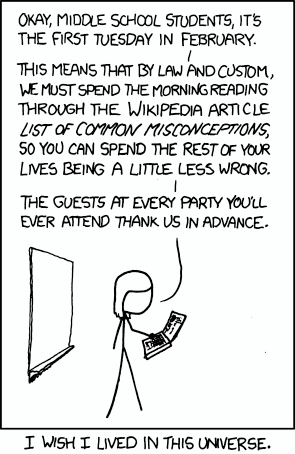
Due to its inherent vulnerabilities and high-profile incidents of publication errors and other scandals, many scholars have turned a blind eye to Wikipedia. However, there’s just as great a need to question traditions and authority. Humans are trusting creatures. At some point, we have to take others on faith. In an age of clickbait, filter bubbles, echo chambers, and other distorted realities, however, it’s important to continually and critically evaluate the credibility of all types of information sources.
Nobody is entitled to their own facts. People with their heads enough in the sand forget how you can still be wrong even if you think you’re right, and that merely wanting something to be true doesn’t make it so. Arguing with such individuals seems pointless. You cannot reason someone out of an unjustified belief they didn’t reason themselves into in the first place. Like the doomsday cultists who predicted the end of the world and remained steadfast followers when it didn’t happen, challenging faulty beliefs of the willfully ignorant can actually strengthen them, thanks to a number of ego defense mechanisms.

Consider the case of fossil records. Aside from the deliberate hoaxes such as Piltdown Man, which was the combination of a “human cranium and an orangutan jaw with filed-down teeth,” other findings may be prone to different interpretations depending on one’s point of view. Suppose you are a fan of the multiregional theory of human evolution, while someone else is emotionally attached to and invested in the “Out of Africa” model. The two of you would likely disagree on how much weight a finding of early humans not in Africa should carry as support for a modified hypothesis.
People with an axe to grind may be deliberately indifferent to certain empirical observations, while employing a confirmation bias to seek out and agree only with data conforming to their worldview. As with the proverbial person looking for a set of dropped keys at night, but only under the streetlamp, this results in a slanted perspective on reality. Cognitive dissonance creates such positions as “dinosaur bones were put there to test us” (from Young Earth creationists) and “carbon-14 dating is unreliable” (from believers that the Shroud of Turin belonged to Christ). Moving the goalposts so much that a belief is no longer capable of being falsifiable or reproducible makes it wholly unscientific.

Moon landing conspiracy theorists call all of the photographic proof, including how we can see the spacecraft debris and research equipment left behind with telescopes, hoaxes. If no conceivable set of circumstances would change someone’s opinion of something, there’s little point in discussing much less debating their effectively ideological viewpoints. I can’t prove to you there’s no real Thor or Elvis is dead if you refuse to acknowledge any evidence to the contrary. But it is worth examining your own prejudices. It’s no accident that the people who deny the Holocaust occurred just so happen to be anti-Semitic and the people who claim the Sandy Hook massacre didn’t occur or call Parkland survivors “crisis actors” are very much against gun control.
This is why open data is so important, and not just in the scientific community. We should be very wary of anyone demanding blind loyalty or not welcoming others to fact-check their claims. Sunlight is a great disinfectant. Members of the Church of Scientology have attacked the psychiatric profession, which incoincidentally helps deprogram victims of brainwashing. Critics of the mainstream media, similarly, have effectively insulated themselves from accountability by branding journalists who point out their false statements as “fake news.”
As good as humans have become at understanding the world around us, we are also prone to illusory pattern perception. If you look out of your bedroom window on a winter morning and notice snow on the ground, you may safely deduce that it snowed the previous night, even though it’s possible your neighbor was trying out a new snow-making machine. If you see Mars through a telescope and can detect lines on the planet’s surface, however, it’s not a fair assumption to infer that the Martian civilization has constructed a network of canals.

Similar leaps in logic are the basis for all kinds of questionable medical and scientific claims. Are you above such faulty reasoning? Don’t be so sure. What shape is a raindrop? How many senses do humans have? What color is the sun? Bad information will always exist. We aren’t infallible. In a way, it helps inoculate us to think more critically. But just as the dose makes the poison, given the vast amount of bullshit out there already, we should always be working to reduce the propagation of false statements.
All people can be fooled some of the time. During at least one point in your life, with or without your consent, you will be deceived. We can only strive to minimize that risk. Of equal importance is also taking the upmost care not to not bear false witness against others. In other words, to repeat a common phrase from the early days of the Net, don’t spread that hoax. After all, there’s some good in this world. Why not contribute to it?
It’s been said that many people think they are thinking when they are merely rearranging their prejudices. Only by remaining reasonably skeptical, recognizing fallacies, and disregarding our own biases can we avoid the trap of conflating wishful thinking with justified belief. If you seriously want to advance the search for knowledge, don’t delude yourself by jumping to unwarranted conclusions because you want them to be true, or discount evidence suggesting you’re either wrong or things aren’t as you want them to be. History will judge us by any falsehoods we cultivated and the truths we’ve promoted.
Further Reading
- Bunk, by Kevin Young
- How to Balance Your Media Diet
- How to Spot Fake News
- Logical fallacies
- Storm, by Tim Minchin
- An Honest Liar
- You’re not going to believe this
Editor’s Note: This article is published with the permission of the author, with first publication on Medium.

